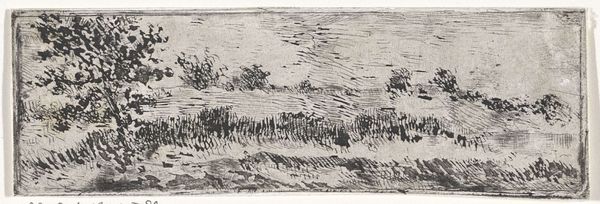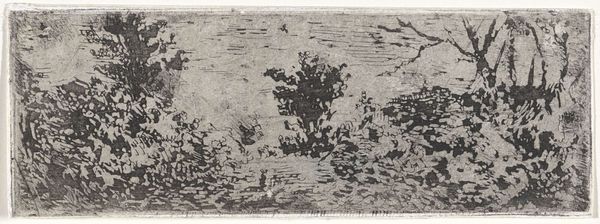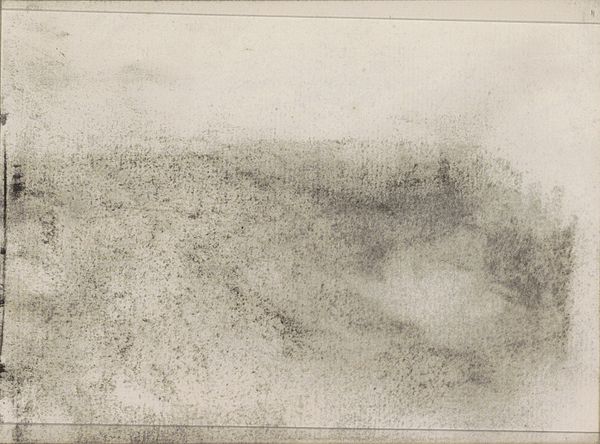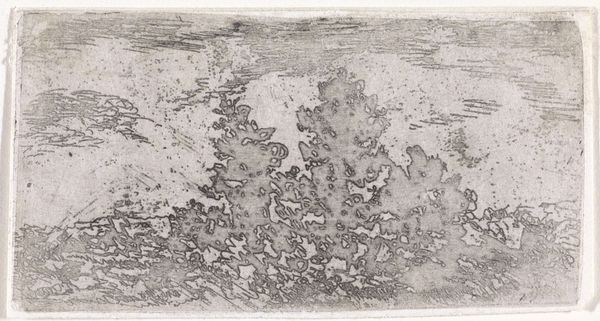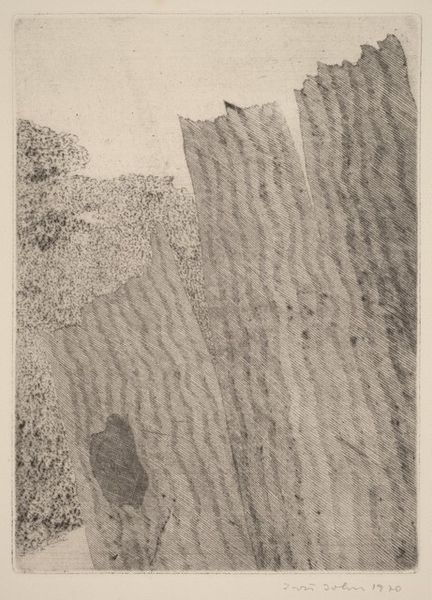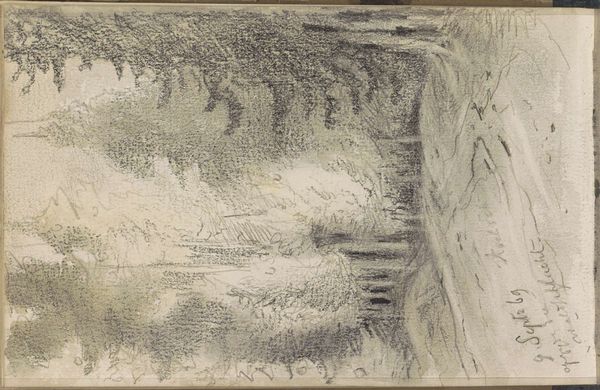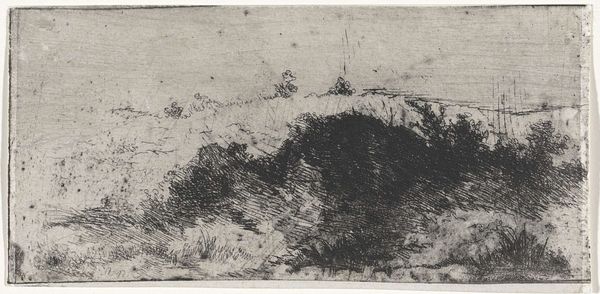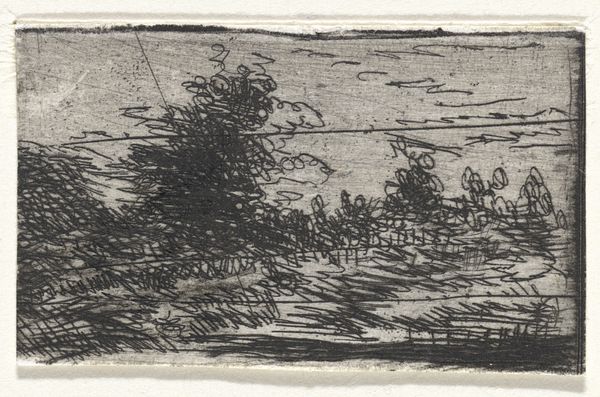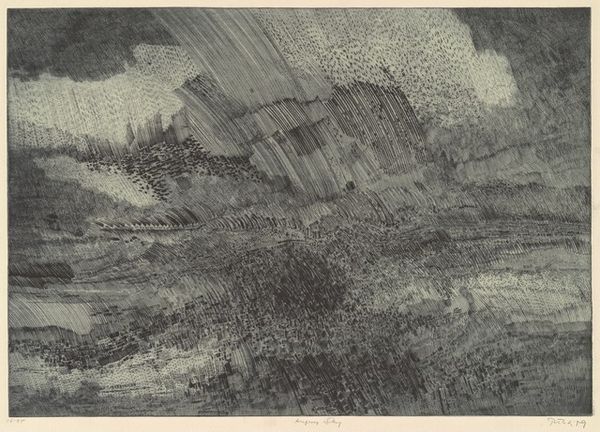
Dimensions: height 44 mm, width 135 mm
Copyright: Rijks Museum: Open Domain
Curator: Here we have a print entitled "Landschap met bomen" or "Landscape with trees," attributed to Arnoud Schaepkens, who worked between 1831 and 1904. It's an etching, giving it that distinctive line quality. Editor: It strikes me as quite somber. The dense hatching creates a palpable sense of atmosphere, almost oppressive. It feels raw, immediate. Curator: The use of etching does lend itself to that directness. Etching allows for incredibly fine detail but also retains a certain roughness, visible in the inconsistent line weight, which adds a vital sense of immediacy to the final work. The prevalence of landscape and the Romantic preference for subjects relating to nature created markets and venues where this could be created and then consumed by middle-class patrons and private collectors alike. Editor: Indeed, one notices a conscious interplay between control and accident. The artist meticulously lays down the acid-resistant ground, only to relinquish some control to the acid itself. This piece displays that back and forth very intentionally. One could examine what etcher’s workshops might have made possible and what other materials or print editions may have derived from such prints as this landscape study. Curator: Consider, too, that this work comes from a period when landscape art became a carrier for national identity and cultural values, although whether those elements would have informed every act of creating such art, we can only wonder. The genre's popularity offered artists the chance to make commentary on modern social conditions within an aesthetically validated realm. Editor: Ultimately, I see in Schaepkens’s landscape not just trees or a vista, but a meditation on process itself. What we see before us comes through the convergence of the physical world with chemical process and the artist’s skilled manipulation and is intended for mass distribution to shape and transform visual understanding, not simply reflect an experience of place. Curator: A beautiful thought. Thank you. Arnoud Schaepkens invites us to ponder nature, culture, and, yes, material processes that are often unseen. Editor: Indeed, something as everyday as trees becomes an act of immense, almost brutal construction when subjected to the material lens of the studio or workshop. It reveals how artworks operate socially through material exchanges and distribution.
Comments
No comments
Be the first to comment and join the conversation on the ultimate creative platform.
